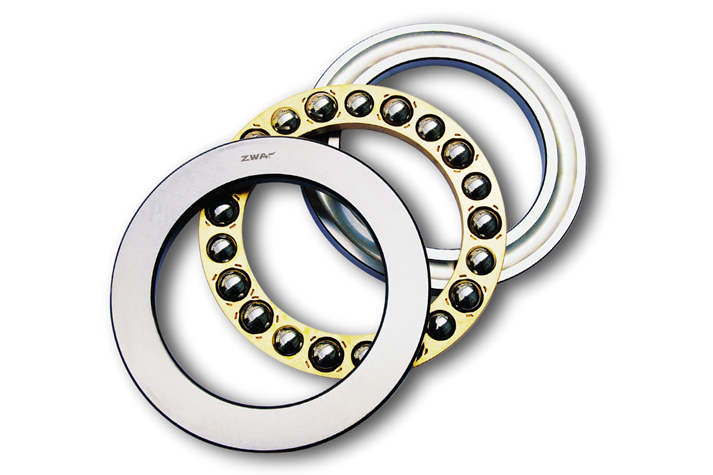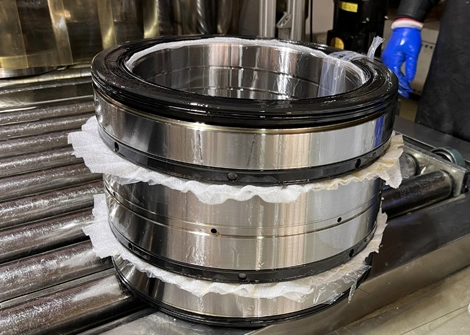
The rolling bearing itself does not produce noise. The bearing noise is a kind of sound phenomenon caused by the vibration and collision of parts in the running process of the rolling bearing. The ratio of elastic vibration to strong vibration of bearing parts is solid sound, and the air vibration caused by solid sound in the range of sound frequency is the bearing noise.
The "bearing noise" usually felt is in fact the sound effect produced by the vibration between the rolling bearing and the surrounding structure directly or indirectly, and this is why many times the noise problem can be viewed as a vibration problem involving the entire bearing application.
The vibration of rolling bearing is the source of bearing noise, and different bearing noises come from different types of bearing vibration. Like the vibration of bearings, the mechanism of bearing noise is also very complex. Bearing noise can be divided into the following forms according to the characteristics of bearing noise:
(1) The noise generated by the structural type and the bearing size
The noise is the basic noise produced in the elastic deformation of bearings, rolling body, clearance, cage, etc.
(2) The noise caused by bearing surface effect
The noise caused by the inner and outer rings of bearings, the roundness, corrugation, roughness and defects of the steel ball working surface. A large number of experimental studies show that the influence ratio of the outer ring of deep groove ball bearing, inner ring of deep groove ball bearing and steel ball surface quality on the bearing noise of deep groove ball bearing is 1:3:10. The steel ball surface quality has the greatest influence on the deep groove ball bearing noise.
(3) Noise generated by friction and lubrication
Friction and lubrication have a great influence on the noise generation of rolling bearing. Small friction and good lubrication state mean small noise generation of bearings.
(4) Noise caused by working conditions
The load, speed and mounting fit state of the bearing directly affect the bearing noise generation. The higher the speed of the bearing is and the greater the load is, the greater the noise produced by the bearing is. In addition, the relevant research shows that 50% of bearing noise is caused by poor installation.
(1) Excitation caused by changes in the number of loading rollers
When a radial load is loaded on a bearing, the number of rolling elements that carry the load will change slightly in operation, resulting in the offset of the load direction. The resulting vibration is unavoidable but can be mitigated by axial preloading on all rolling elements (not applicable to cylindrical roller bearings).
(2) Local damage
A small number of bearing raceways and rollers may be damaged due to handling or installation errors. In operation, the damaged bearing parts will produce a specific vibration frequency; the damaged bearing parts can be identified by vibration frequency analysis. This principle has been used in condition monitoring equipment to monitor bearing damage.
(3) Accuracy of related components
In the case of close coordination between the inner and outer rings of the bearing and the bearing seat or the drive shaft, the inner and outer rings of bearing may be deformed due to improper matching with the shape of adjacent components. If the deformation occurs, the vibration may happen during operation.
(4) Pollutants
If the device is operated in a contaminated environment, impurities may enter the bearing and be crushed by the rolling element.The degree of vibration produced depends on the number, size and composition of the crushed impurity particles. In this condition, a typical frequency form may not occur, but a disturbing noise can be heard.
(5) Other reasons
The reasons for bearing noise are complex. The first is the wear between the matching surface of the bearing inner and outer rings. Because of this wear, the coordination relationship among the bearing, the shell and the shaft is destroyed, causing the axis to deviate from the correct position. The shaft produces abnormal sound when running at a high speed. When the bearing is tired, its surface metal will fall off, which also makes the radial clearance of the bearing increase and leads to abnormal sound. In addition, insufficient bearing lubrication, the formation of dry friction, and bearing breakage will produce abnormal sound. Bearing wear and cage loosening or damage will also cause abnormal sound.

